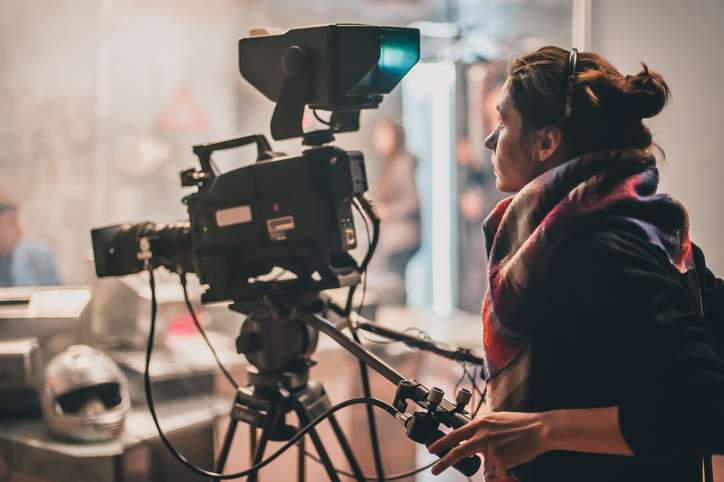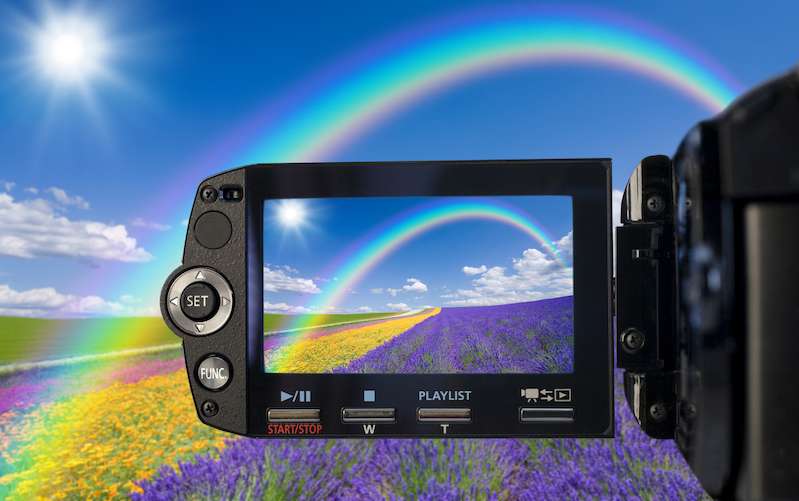In today’s ever-advancing landscape, video producers face mounting expectations to master the art of effective color utilization. With advancements in camera sensors and readily available color correction and grading tools, the demand to capture and leverage color has never been greater.
It’s crucial not to underestimate the profound impact of color as a communication tool, and its careful construction through a cohesive color palette starts right from the pre-production stage. Color possesses an incredible ability to communicate and elevate the art of storytelling. As advanced camera sensors and easily accessible color correction and grading tools continue to flourish, videographers are faced with greater pressure to wield color effectively. A crucial step for any video producer seeking to captivate their audience and weave fascinating narratives is the construction of a cohesive color palette.
Discover how you can harness the power of color to enhance your storytelling journey.
Understand Color Theory
Color theory serves as a cornerstone in the realm of video production, enabling a profound comprehension of color interactions and the emotional responses they evoke. By harnessing the principles of color theory and crafting a cohesive color palette, you can effectively convey emotions, set moods, and deliver powerful messages to your audience. To delve deeper into the realm of color theory, familiarize yourself with key terms:
1. Color Wheel: The color wheel serves as a valuable tool for understanding color relationships. It encompasses three categories: primary colors (red, yellow, and blue), secondary colors (green, orange, and purple), and tertiary colors (yellow-green, blue-green, red-purple, etc.).
2. Color Temperature: Color temperature denotes the warmth or coolness of a color. In video production, you primarily encounter two color temperatures: daylight (5500 K) and tungsten (3200 K).
3. Saturation: Saturation measures the intensity or purity of a color. Highly saturated colors exude vibrancy and boldness, while desaturated colors emit subtlety and softness.
4. Contrast: Contrast refers to the distinction between light and dark colors. Utilizing high contrast yields a dramatic impact, while low contrast offers a more nuanced and gentle effect.
By grasping these fundamental aspects of color theory, you’ll unlock the potential to elevate your video productions and captivate your audience through skillful color manipulation. Let the magic of color theory guide your creative journey!

Pre-Production Planning
A successful color palette lies in the realm of meticulous planning. The more thought and consideration you invest into your color choices, the greater impact they will have in conveying your intended message to your audience. During the pre-production phase, it is vital to carefully contemplate various elements such as locations, production design, costuming, makeup and lighting to shape the overall look and feel of your video. This holistic approach ensures the creation of a cohesive visual language that resonates consistently throughout your entire production.


Color Lighting Techniques
Lighting stands as one of the most influential tools at your disposal when it comes to creating captivating color effects. Within your creative arsenal, there are several techniques you can employ to craft a specific and impactful color palette:
1. Color Correction Gels: Utilize color correction gels, which are filters placed over your lights, to alter their color temperature. With a wide array of available colors, these gels enable you to experiment with diverse color combinations and achieve the desired visual effect.
2. Dimming: Adjusting the intensity of your lights through dimming can play a significant role in attaining your intended color effects. By dimming the lights, you can create a subdued or more muted atmosphere, adding depth and nuance to your scene.
3. Color Separation: Employ color separation techniques to enhance the dynamism of your visuals. By contrasting the warmth of skin tones against a cooler backdrop, you can draw attention to your subjects while emphasizing the distinction between characters and their environment.
4. White Balancing: Make precise white balance adjustments to accentuate the color temperature of a scene. For instance, using daylight lamps and white balancing the camera to approximately 4300 K can emphasize a dull or sterile environment, setting the desired tone and ambiance.
By implementing these lighting techniques, you can wield the power of illumination to create captivating and visually striking color effects that elevate the impact of your work.
Exploring Green & Magenta
While warm and cool tones often dominate the thoughts of cinematographers, the green and magenta axis of the color vector wheel holds immense potential in shaping the overall mood. By skillfully manipulating saturation and tint along the magenta axis, you can unlock a plethora of different looks and moods. Let’s delve into the possibilities:
Saturation and Tint: Experimenting with the saturation and tint along the magenta axis allows for an array of creative outcomes. For instance, by desaturating the magenta and introducing hints of violet, you can craft a dreamy, ethereal effect that evokes a sense of otherworldly beauty.
The green and magenta axis, often overlooked, presents a rich opportunity to infuse your visuals with unique tones and emotions. By exploring this aspect of the color vector wheel, you can expand your creative horizons and create captivating scenes that resonate deeply with your audience.


Master the Art of Color Grading
When it comes to cinematography and color grading, the paramount focus should always be serving the story. Simply crafting visually stunning videos is not enough if the message fails to be effectively conveyed. Your color palette should seamlessly intertwine with your storytelling, working hand in hand to evoke emotions, establish atmosphere, and convey profound meaning.
Renowned cinematographer Autumn Durald emphasizes that true mastery in the realm of directing photography lies not in creating visual grandeur alone, but in ensuring that the look harmonizes with the scene’s emotional essence and bolsters the narrative. This principle extends to the art of color grading as well. The objective of color grading is to immerse the viewer in the story, rather than distract them from it. If the color palette falls short in effectively conveying the desired message or mood, it can detract from the story, pulling the viewer out of the immersive experience.
While color grading may appear daunting, especially for newcomers, it’s crucial to remember that the process transcends the mere addition of flashy effects or the pursuit of a highly polished appearance. Instead, it revolves around creating a consistent and cohesive visual language that artfully communicates your message and captivates your audience.
By understanding the integral role of cinematography and color grading in storytelling, you can weave a visually compelling tapestry that resonates deeply, transporting your audience into the heart of your narrative.

